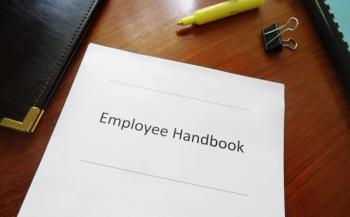
Three Areas to Reduce Costs at Your Medical Practice
By taking a hard look at reducing costs for staffing, overhead, and technology at your medical practice, you may see increased physician compensation.
It is surprising how many of my private practice clients haven't invested the time to explore opportunities to decrease overhead and operating costs. With reimbursement for professional services flat or declining, this means that physician incomes are below where they could be. Equally surprising is that cost management is easier than many physicians think and the results can be quite significant.
Cost reduction opportunities fall into a few major categories and the approaches described below have been successful in practices of all sizes. You don't know how much you can build your bottom line until you try and now is a great time to make the effort, especially with "value purchasing" on the horizon.
Staffing
This is the biggest cost and likely the biggest opportunity. While each practice is different and staffing will vary by size and specialty, here are a few ideas that you may find to apply at your practice:
• Too Many Staff - Practice employees always recall the day when patients were lined up at the front desk or calls were on hold for long periods but is this a typical day or one time in the last six months? It is likely that this is a rare occasion, but your staff will want to ensure there are enough of them in case it happens again.
How do you know how many staff you need? I start by asking people what they do, task by task, and then how long it takes for each. A three-physician practice has three front-desk staff and they each had stories of days that were "crazy busy" and said another assistant would be a great benefit. But how many do they really need?
This family practice sees four patients per hour; so that's 12 per hour for the 3 physicians if all slots are filled. Staff also take appointment calls. Each of those 12 patients called for an appointment. They each need to check out as well. When I interviewed the staff (and sat in the waiting room to confirm what they said) I learned that it takes about 3 minutes to check in a patient, another 3 minutes to check out the patient and 3 minutes to 4 minutes to make an appointment. This means about 120 minutes of effort for all three tasks if every slot is filled. It appears that we have one extra person. Since nobody works every minute of every hour we might need a part-time person to cover mornings because appointment calls are heavier before noon. If we save that half-time salary, as much as $15,000 could be added to physician paychecks.
The same approach holds true for billers. How many minutes does it take to post a charge, enter a payment, and file insurance? Figure the total minutes based on your practice volumes and use 80 percent as an effective level of staff utilization. This means about 45 minutes of every hour.
• Wrong Kind of Staff - Do you employ an registered nurse (RN) when an licensed practical nurse could adequately handle the responsibilities? If the clinical assistant simply escorts patients to and from the exam room and takes vital signs, maybe a medical sssistant (MA) is the answer. MAs earn about half that of an RN.
Overhead
• Space - Typically medical office space demands premium rent yet many practices house staff there that could easily be moved to less costly surroundings. Billing, accounting, and transcription staff seldom need access to the physicians and could be grouped in a nearby office that is much less per square foot. That vacated space could be turned into exam rooms for a new associate or modified to accommodate an ancillary service that could generate revenue.
Did you convert to an EHR a few years ago but still have the record room? Maybe it's still filled with old records. Purge the records and move the remainder to offsite storage and repurpose the space.
• Supplies - What you buy is another opportunity to trim costs. Typically, medical supplies are purchased by a clinical assistant and the local sales rep for the medical supply vendor knows that maintaining a great relationship will ensure continued orders, regardless of cost. We suggest that medical supplies get bid out every two years. It is easy to download order histories and identify the highest cost items that make up 75 percent of total expenses. Give that list, less the prices of course, to another vendor and see what you find. Just knowing that this happens every few years will keep your low-cost supplier on their toes. You might also want to consider an incentive program for staff to identify cost savings opportunities.
Technology
Software is cheaper than people. One practice used nursing staff to call patients with lab results. The physicians were convinced that their patients demanded this level of service. We convinced them to try an automated system that allowed patients to call an 800 number and get the same results in the nurse's voice. A survey of patients 30 days later found no issues at all and the practice has been using this approach for more than a year with one fewer nurse on the payroll.
Summary
These are just a few ideas that can return attractive savings for minimal effort. Don't hold on to the "old' ways when more efficient and less costly options are available. The economics of medicine are changing and successful practices need to change as well.
Newsletter
Optimize your practice with the Physicians Practice newsletter, offering management pearls, leadership tips, and business strategies tailored for practice administrators and physicians of any specialty.












